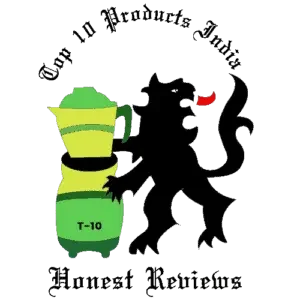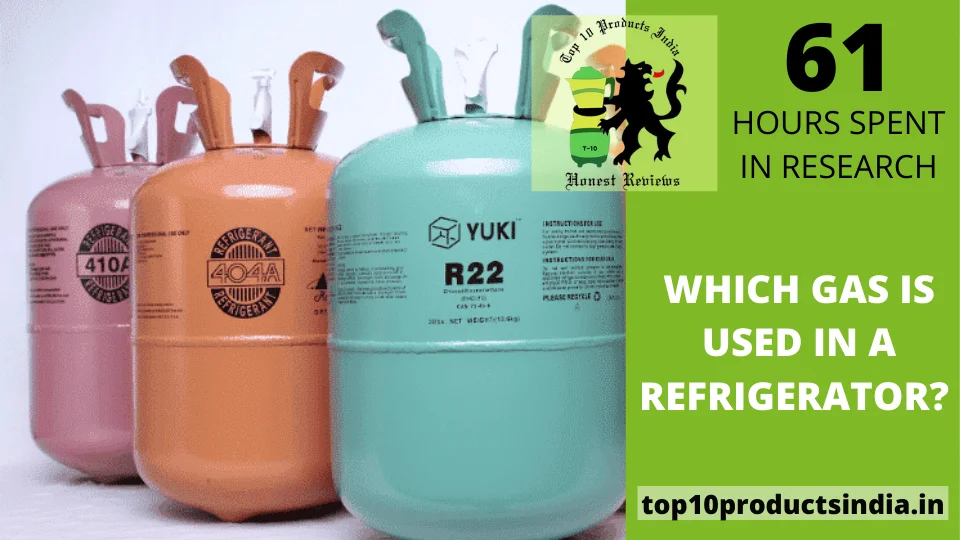Refrigerators are all around us, keeping our food fresh, stopping ice cream from melting, and allowing us to store perishable items for weeks.
But what kind of gas is used inside modern refrigerators to keep things cool? The answer is a type of refrigerant known as R-134a, also called HFC-134a.
The industry has become favoured by this gas due to its superior cooling properties and low environmental impact compared to earlier solutions.
It is colourless, odourless, and nonflammable, meaning it can be safely used inside all modern refrigerator units. With its ability to keep temperatures a steady degree or two below freezing, R-134a ensures that whatever you put into your refrigerator remains safe and cold.
What is Refrigerant Gas?
The refrigerant gas is a substance used in refrigeration and air conditioning systems to transfer heat from one place to another. It is a crucial component of these systems, as it helps to keep the air inside cool and comfortable.
Refrigerant gases are usually classified as either halocarbon, such as chlorofluorocarbons (CFCs) and hydrochlorofluorocarbons (HCFCs), or hydrofluorocarbons (HFCs). These gases are designed to have high thermal stability, low toxicity, and low flammability.
Refrigerant gases have been a subject of environmental concern due to their contribution to the depletion of the ozone layer and the greenhouse effect.
As a result, regulations have been implemented to phase out certain types of refrigerants, such as CFCs, and encourage the use of more environmentally friendly alternatives, such as HFCs.
It’s important to handle refrigerant gases responsibly and properly maintain refrigeration and air conditioning systems to prevent leaks and reduce the environmental impact of these systems.
The History of Refrigerant Gasses used in Refrigerators:
The history of refrigerant gases used in refrigerators dates back hundreds of years. Different types of gasses have been used to cool down foods and drinks from ancient times to modern times.
In the 19th century, various techniques were developed that allowed scientists to produce a cold temperature inside a container without the need for ice.
One such technique was “vacuum cooling”, which involved generating a vacuum inside a container so that any heat within is quickly released through the walls of the container.
By the early 1900s, scientists had begun experimenting with chemical compounds as refrigerants, with sulfur dioxide being one of the more popular choices due to its low cost and performance-efficiency level.
In 1930, Freon (or chlorofluorocarbon) gas was developed, and shortly after, it was adopted as the primary choice for domestic refrigerators in Europe and North America. This new refrigerant gas balanced efficiency with cost and soon became an industry standard for many decades by 1950.
In 1987, chlorofluorocarbons or CFCs were identified as an ozone-depleting substances. An international agreement outlawed them in 1989 under what is known as the Montreal Protocol (or the Stratospheric Ozone Protection Act).
Following this agreement, HFCs (hydrofluorocarbons) was introduced to replace Freon gas as they had no contribution towards ozone depletion. Manufacturers then adopted compounds like HFC-134a as safe alternatives that provided similar levels of efficiency.
Today’s modern fridges are often powered by more eco-friendly hydrocarbon mixes like R600a (isobutene), R290 (propane) or R717 (ammonia) since they have lower global warming potential than HFCs but with comparable performance results.
These mixtures are also designed to be non-flammable, which makes them safer than propane/butane themselves when handling these glasses whilst setting up/installing your fridge unit at home.
A quick look at the different gasses Used in the Refrigerator:
Refrigerators use refrigerants, which are gases or mixtures of gases, as cooling agents. Some of the most commonly used refrigerants in refrigerators are:
- R-134a is an HFC (hydrofluorocarbon) refrigerant widely used in household refrigerators and commercial refrigeration systems.
- R-600a (Isobutane): This hydrocarbon refrigerant is used as a replacement for R-134a and is known for its low global warming potential.
- R-404A: This is an HFC blend refrigerant used in commercial refrigeration systems and some household refrigerators.
- R-12 (Dichlorodifluoromethane): This was once a widely used refrigerant in refrigerators but has been phased out due to its high ozone depletion potential.
- R-22 (Chlorodifluoromethane): This was once a common refrigerant used in household refrigerators, but it has also been phased out due to its high ozone depletion potential.
It’s important to note that the choice of refrigerant used in a refrigerator is regulated by international environmental agreements such as the Montreal Protocol and the European F-Gas Regulation, which aim to reduce refrigerants that harm the ozone layer and contribute to global warming.
The gasses used in the modern-day Refrigerator:
Due to advancements in technology, we live in a period that allows us to achieve an ideal balance between satisfying our requirements and protecting our surroundings.
There have been numerous improvements in the quality of life of people that have contributed to improving the overall environmental conditions. One example of a visible improvement that occurs to the same degree is using more defined and effective refrigerant gasses.
The earlier gasses were very damaging to the environment because of their ozone depletion; the latest refrigerant gasses are carefully selected.
They are designed to offer the needed support for the Refrigerator to function at its peak, ensuring that it is conserving the balance of nature.
What are the gasses currently being utilized in refrigerators of today?
Are you curious? Take a look at:
R-134a (hydrofluorocarbon):
R-134a (hydrofluorocarbon) is a chemical compound used in refrigerators and air conditioning systems as a coolant. It has been increasingly popular since its discovery in the 1980s and is now commonly used worldwide.
This gas is non-toxic, non-flammable, and has no known environmental impact. It’s also cheaper than other gases while offering the same level of cooling efficiency. This makes it an attractive choice for many businesses, from large commercial operations to small residential ones.
The chemical compound comprises two hydrogen atoms and four chlorine atoms, forming a molecule with no odour or colour. Its boiling point is -15 F, which means it can hold on to coolness longer than other gases in extreme temperatures.
This makes it ideal for those close to the equator or in desert climates where the climate can vary greatly from night to day.
While R-134a does have a mild toxicity if inhaled, this toxicity dissipates quickly and doesn’t linger like chlorofluorocarbons (CFCs).
The gas is stored under pressure, so it can be used without electricity or other energy sources. It also remains stable at low temperatures, making it perfect for use in freezers and ice boxes during power outages or in remote locations with little access to electricity.
R-600a (Isobutane):
R-600a, also known as Isobutane, is a refrigerant gas used in household refrigerators and other cooling and refrigeration applications.
It is a hydrocarbon refrigerant, meaning that it is composed of hydrogen and carbon, and is classified as an A2L refrigerant, meaning that it has a low environmental and safety risk.
R-600a has several advantages over other refrigerants. For example, it has a low global warming potential, which means that it has a relatively low impact on the environment and does not contribute to climate change to the same extent as other refrigerants.
Additionally, it is non-toxic, non-flammable, and has low pressure, making it safer to use in refrigeration systems than other refrigerants.
R-600a is popular for refrigeration applications due to its low environmental impact and safety profile. It is increasingly being used to replace older refrigerants that have been phased out due to their high ozone depletion or global warming potential.
R-404A
R-404A gas is a non-ozone-depleting commercial refrigerant commonly used in industrial and commercial refrigeration systems.
It is an HFC type of hydrofluorocarbon, showing low ozone depletion potential (ODP) and zero global warming potential (GWP). R-404A has a boiling point of -45°F (-43°C), making it ideal for cooling applications in moderately cold climates.
This refrigerant is highly efficient and energy-saving while operating with minimal environmental effects. It operates within the range of 25-50% relative humidity and temperatures from -15°F to 69°F (-26°C to 20°C).
These attributes make R-404A an excellent choice for industries that require constant temperature control, such as food storage, restaurants, and supermarkets.
The safety of R-404A is well established, although it must be handled with caution due to its pressure levels. For instance, if the temperature of hazardous compounds exceeds 150°F (65°C), they may ignite or explode when exposed to oxygen or air. In the event of leakage, proper safety protocols must always be followed.
Working with R 404A can provide many long-term economic benefits in terms of energy efficiency and environmental friendliness compared to other industrial cooling solutions like HCFCs or CFCs, which have been mostly phased out due to their damaging effect on the atmosphere.
To properly install R 404A, technicians must ensure all components are appropriately sized according to the system’s specifications. This includes selecting compatible suction lines and evaporators and establishing proper charging procedures and maintenance schedules.
R-12 (Dichlorodifluoromethane)
R-12, also known as Dichlorodifluoromethane, is a refrigerant gas widely used in refrigeration and air conditioning applications, particularly in older household refrigerators and automotive air conditioning systems.
R-12 is a chlorofluorocarbon (CFC) refrigerant containing chlorine and fluorine. It was originally introduced in the 1930s as a safe, non-toxic, and non-flammable alternative to earlier refrigerants.
However, it was later discovered that CFCs like R-12 are harmful to the environment and have a high ozone depletion potential, particularly to the ozone layer.
As a result, the production and consumption of R-12 have been restricted by international agreements such as the Montreal Protocol. It has been largely phased out in favour of other refrigerants with lower ozone depletion potential.
While R-12 is still in use in some older refrigeration and air conditioning systems, it is becoming increasingly difficult to obtain, and alternatives such as HFCs and natural refrigerants are being used more frequently.
Suppose you have an older refrigeration or air conditioning system that uses R-12. In that case, it may be worth considering having it retrofitted or replaced with a more environmentally friendly refrigerant system.
It’s important to note that the release of R-12 into the atmosphere should be avoided, as it can contribute to the depletion of the ozone layer and harm the environment.
R-22 (Chlorodifluoromethane):
R-22, commonly known as Chlorodifluoromethane, is a refrigerant gas used in air conditioners, heat pumps and refrigerators.
It works by extracting heat from the inside of a structure and transferring it outside using condenser coils. R-22 also helps to maintain a steady temperature by promoting a steady flow of air throughout the area.
In recent years, the use of R-22 has become increasingly controversial due to its potential environmental impact. Its high ozone depletion potential (ODP) means that, if released into the atmosphere, it can significantly contribute to ozone layer depletion.
This is why steps have been taken to reduce and eventually phase out its use. The U.S. Environmental Protection Agency (EPA) requires all cooling equipment manufactured after January 2020 to be charged with alternative refrigerants that are less toxic and more energy efficient than R-22.
It is recommended that users continue to maintain their existing equipment but switch to an alternative when it comes time for an upgrade or replacement.
In certain situations where repair is not possible or cost-effective, practitioners must take special precautions when charging with R-22 to avoid accidental releases into the air and contribute further towards ozone layer degradation.
Overall, R-22 has been widely employed in cooling systems that require superior performance compared to other types of refrigerant gases.
However, due to its detrimental effects on the environment, measures have been implemented in recent years to reduce its use and encourage practitioners and consumers alike to adopt alternatives that are both more energy efficient and less harmful to our planet’s ozone layer.





Hi.I hv read your article about refrigerator gas you have shared the various gases which are used.I will be glad if u can share some resarch on the harm of eating those refrigrated food.
Waiting for reply
Thanks
Hi Vinita, thanks for your comment.
Sure, we have taken your topic into consideration and will surely come up with a well-detailed guide on the side effects of eating refrigerated food.